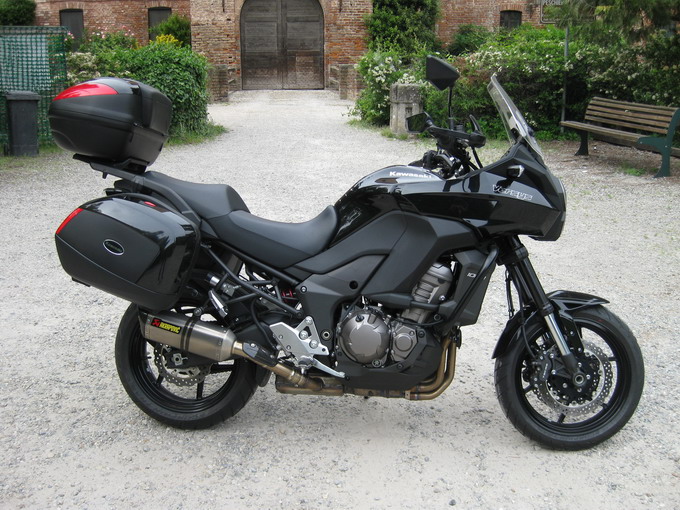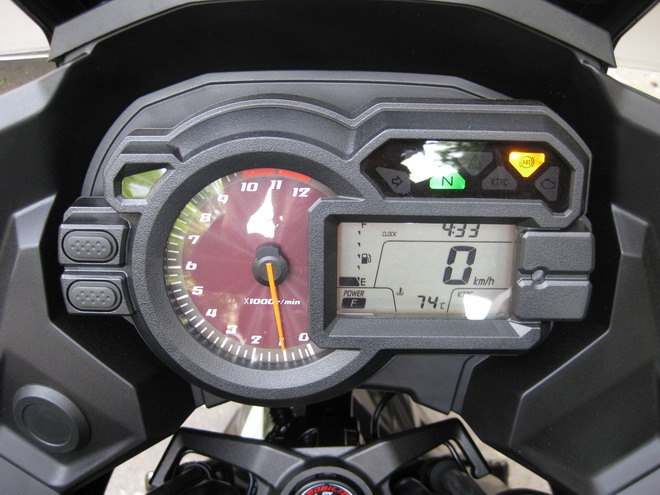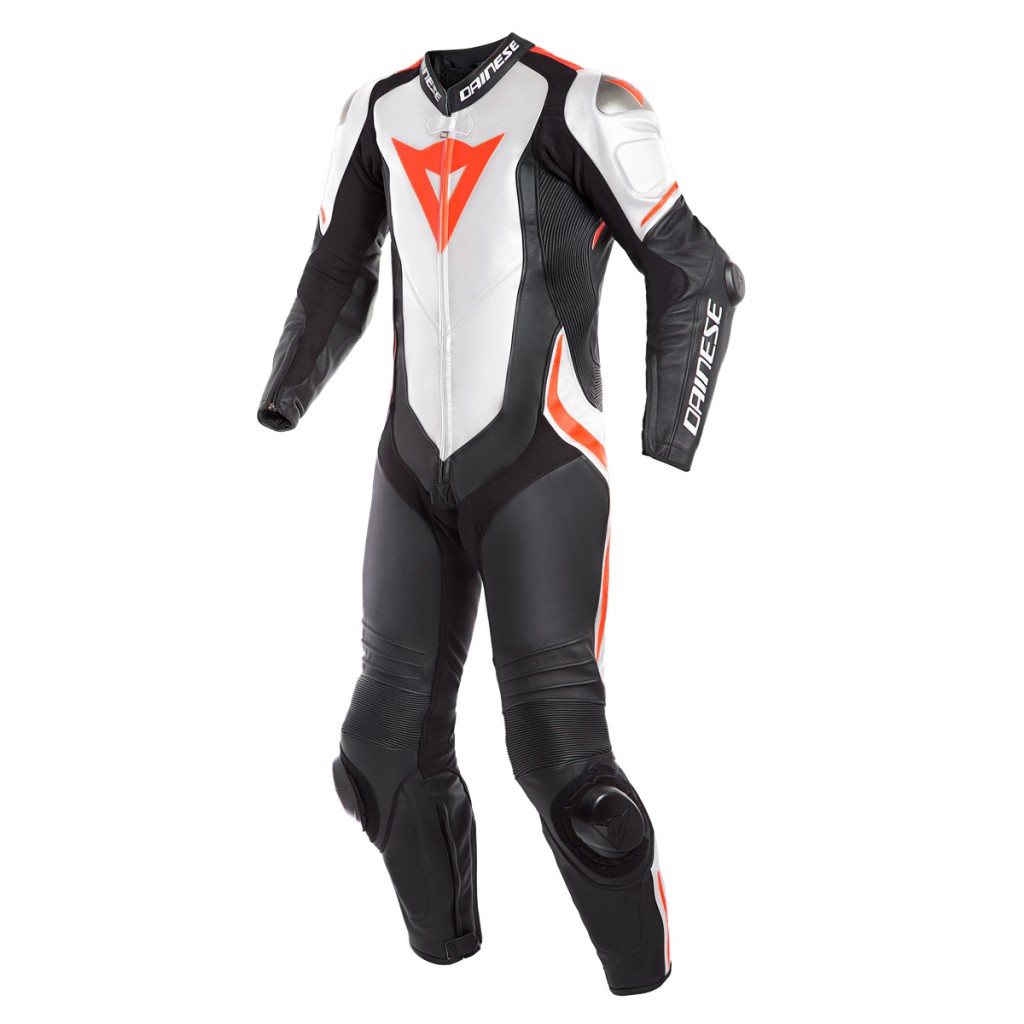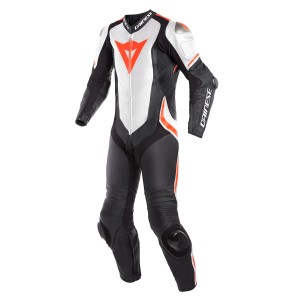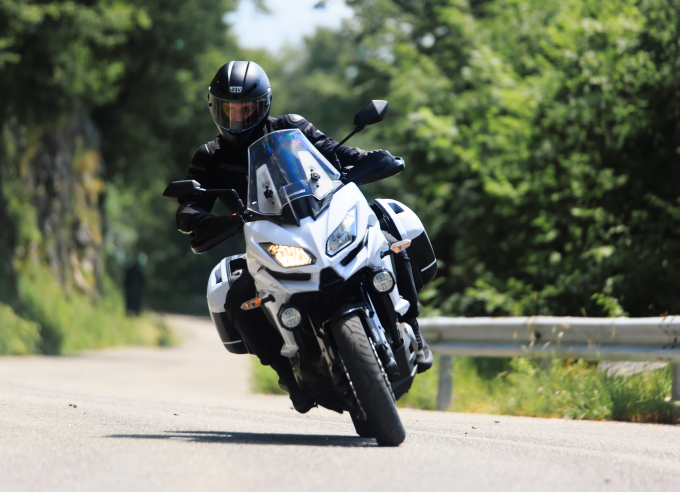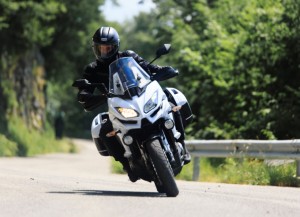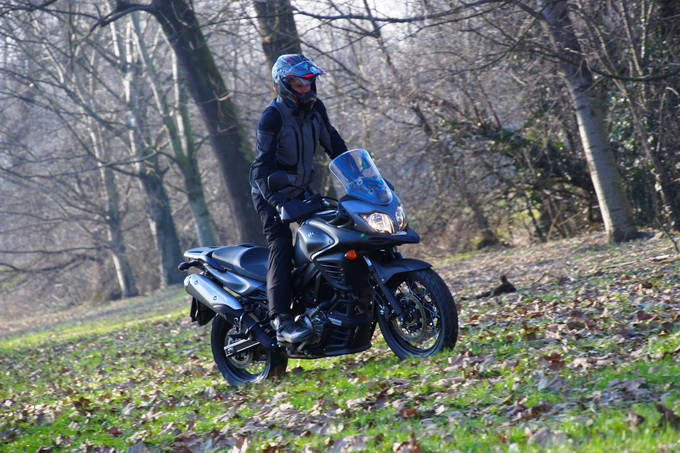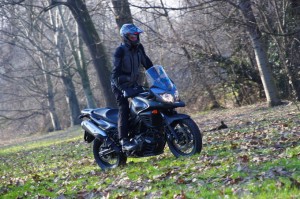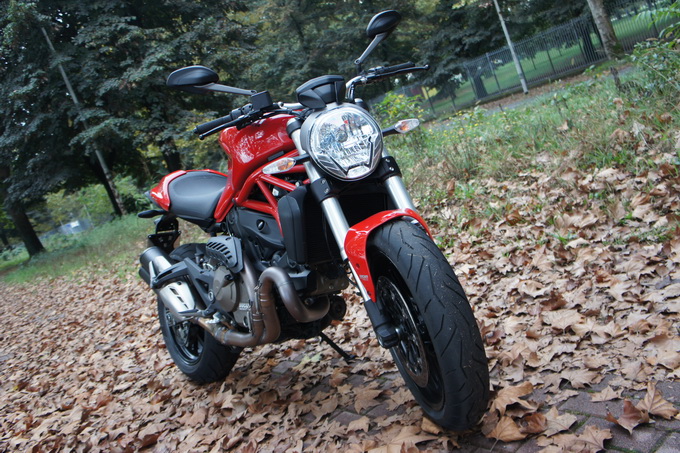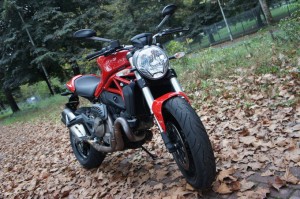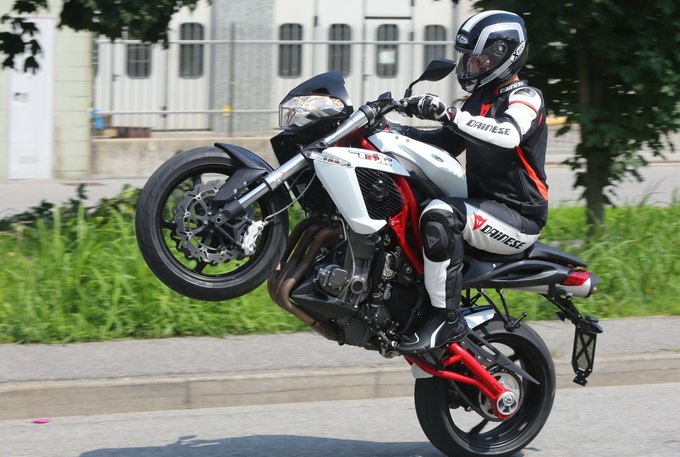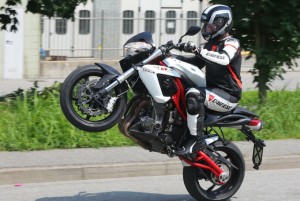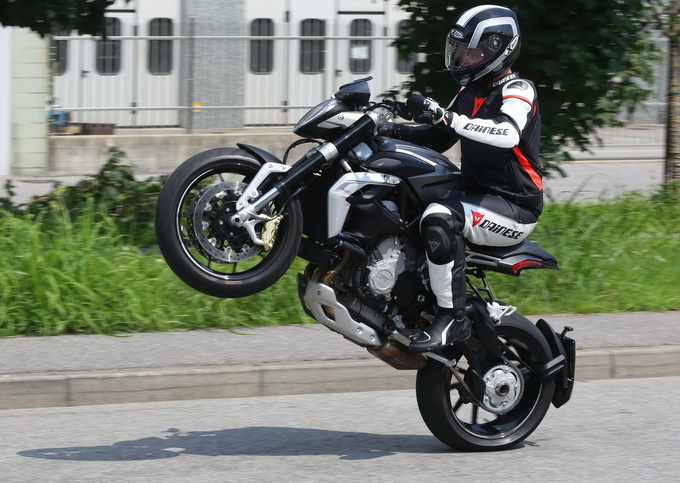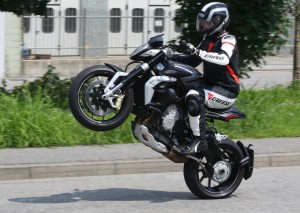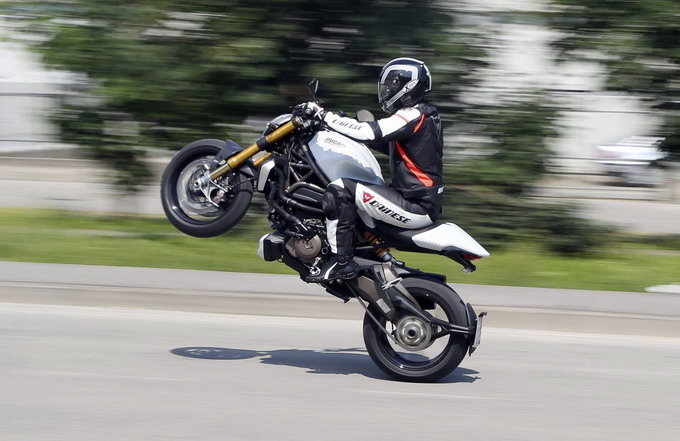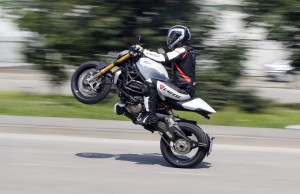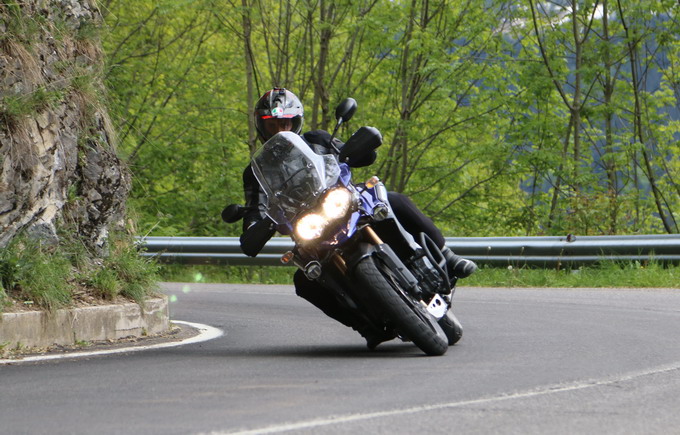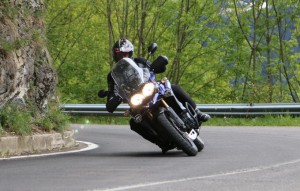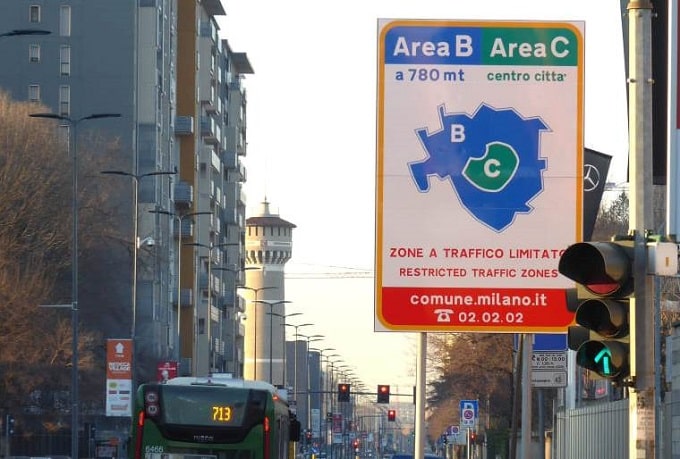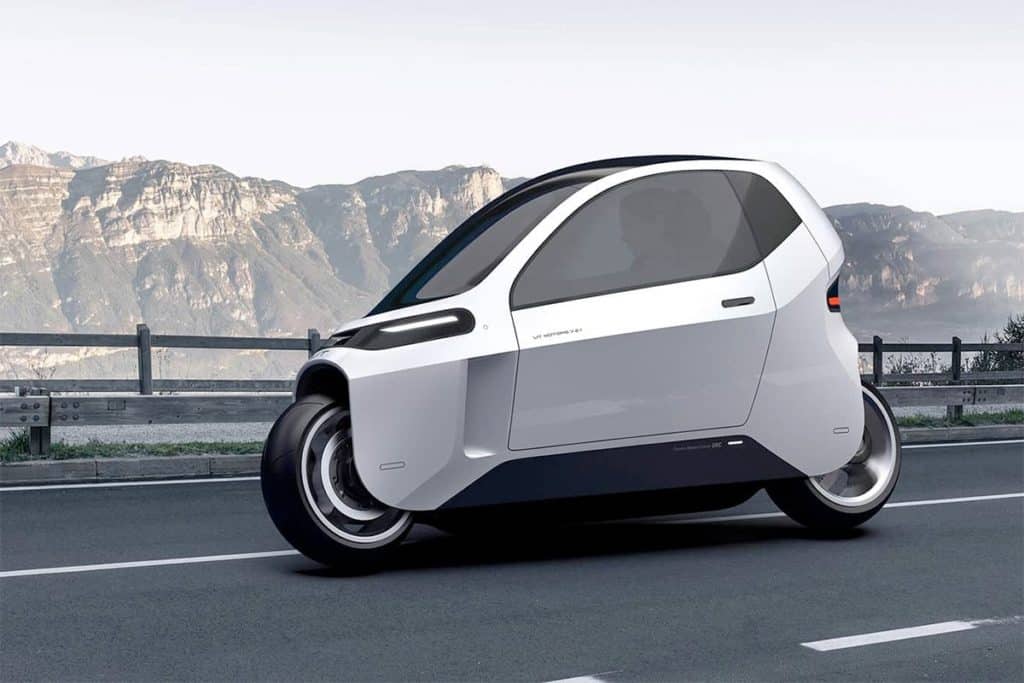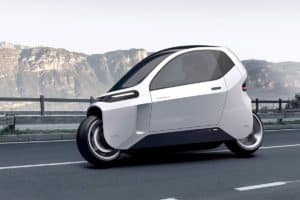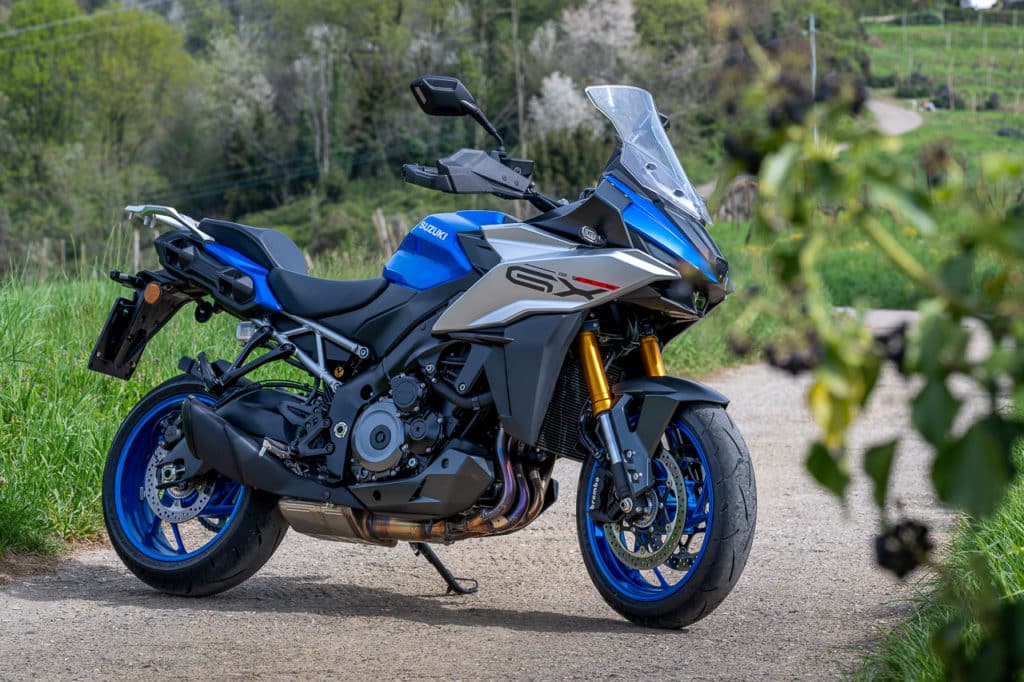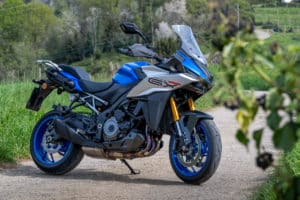Kawasaki Versys 1000 – Road test 2014
The engine is surprising, surprisingly spot on for a dual purpose
It is undeniable that the curiosity to try thethe only in-line 4-cylinder in this segment it was a lot. They are indeed There are many skeptics regarding this choice, and we were a little too, but the engine itself is one of the aspects that convinced us most about this bike. In the crowded crossover segment, the Kawasaki Versys 1000 presents itself as a very interesting solution, characterized by technical and aesthetic characteristics unknown to its rivals. Obviously starting from the engine, which promises to be a clear stance, in contrast with opponents who are almost always twin-cylinder (inline, V or boxer). It almost seemed like an obligatory choice for a use where there is a great need for torque and linearity of delivery. Instead she mounts the 4 in line, starting point is the one in the "old" Z1000, expertly revised, with power down to 118hp, delivered at 9.000 rpm. However, there remains a solution that every motorcyclist associates with the concept of a sports motorcycle, theoretically a heresy for a maxi enduro. Kawasaki didn't stop there. Just to reiterate its diversity, Kawasaki wanted to transfer its DNA to a segment where it had little tradition, succeeding in the undertaking. In addition to the engine too the sophisticated KTRC traction control system is a surprise compared to expectations, very positive. Most of the competition, including the queen of the BMW R1200GS market, opts for solutions oriented towards safety rather than performance, with electronics that cut decisively, sometimes excessively, making it essentially mandatory to exclude it, for those with the ability and desire to dare a bit'. To be clear, the front wheel must remain in strict contact with the ground with the electronics inserted, not even a "stylus" a few centimeters from the ground is allowed. The Kawasaky Versys 1000 instead inherits a decidedly sporty traction control system, based on three levels of intervention and combined with double engine mapping. There is also the possibility of excluding it completely, but it is almost superfluous, because two of the three levels are oriented towards maximizing acceleration, and the front wheel is allowed to rise: fantastic! The picture is completed by a good level of chassis, with a 43 mm Kayaba upside-down fork and a horizontal back-link rear suspension with remote control for preload adjustment. Aesthetically it stands out for a front light with a very personal look, which must be liked. For the rest, without compromising on quality, it has an appearance that perhaps risks having too little character, as if to reiterate that it has plenty of that elsewhere, with excellent performance.
Aesthetics and finishes:
rating: 
Excellent quality, but perhaps lacking in a slightly worn appearance
The appearance is that of a motorcycle that is all substance, while not appearing absolutely clumsy, the feeling is but that which aims to please you more for the technique, for the fun it is able to convey and for the driving pleasure which allows you to devour the kilometres, alone or as a couple. The "total black" color of the sample we tested enhances this sensation even more, in our opinion it is also the most appropriate color. The Kawasaki Versys 1000 It makes you want to drive it and discover it just by looking at it. It is striking in its aesthetics robust bike feel, without unnecessary frills, destined perhaps also for this reason to last over time. Everything is very careful: painting, quality of the plastics, assembly and combinations between the various parts they denote a care taken by Kawasaki in the creation of this model. The handlebar blocks are also of excellent quality, as are the footrests. The instrumentation is quite complete and with a good design. Excellent readability, even when driving at night on unlit roads. Wanting to find a flaw the indication of the gear engaged, now present on almost all competitors, is missing. The saddle, as well as being well made, is very comfortable, you can see it even just by looking at it, the kilometers traveled alone or as a couple confirm it. The engine is set in the frame, on display and with a clean aesthetic, without wires or careless details in sight. Also three brake discs they contribute to giving a racing touch to the bike, in fact they are daisy wave. In our opinion the only element that we don't like about the look of the Versys 1000 is the standard muffler, decidedly subdued compared to the rest. The example we tested was fitted with the Akrapovic titanium silencer, available as an option. Very nice, as well as with a more captivating sound and, obviously, lighter than the standard one. The engine protection is also an accessory available on request. As well as being resistant (it is made of tubular steel), it adapts perfectly to the design of the motorbike and protects against unpleasant surprises during off-road use, but also against damage to the engine and radiator following falls from a standstill or at low speeds. The kit of 3 rigid and waterproof bags, standard on the Grand Tourer, is one of the best in terms of capacity. If the purpose of the motorbike for you is long journeys, covering many kilometers as a couple with plenty of luggage, the central top box of 47 liters and the pair of side bags of 31 liters each, will guarantee exceptional load capacity. Even by removing the two side cases, which can be a hindrance in city driving, the central one alone is able to accommodate two helmets and more. They are also well cared for from an aesthetic point of view, developed by the Italian Givi specifically for the Versys. Undeniable that they are however, less integrated into the line of the motorbike than other solutions seen on more recent models. The same observation applies to the hand guards, excellent from the point of view of use, but which deserved a little more aesthetic refinement.
Engine and performance:
rating: 
The absolute protagonist, a real surprise! And what a joy KTRC is
The engine of the Versatile System, hence the origin of the name, on paper it could have been the most important limitation of this bike, and instead it surprisingly revealed itself as one of its best qualities. We all found it the in-line 4 scheme is unusual for a dual purpose, but the Kawasaki technicians have been able to give this engine practically perfect delivery for the occasion. The origin is the heart of the old Z1000, which this year debuts in a completely new look, engine included. There are 20 fewer horses, but with this new setting it becomes very regular and with one great torque right from the bottom, much more than the numbers suggest, which are in themselves similar between the Z1000 and Versys. At very low rpm it picks up in a full-bodied and decisive way. Even in sixth gear at 1.500 rpm the engine pushes well, but above all it is round and smooth, without any hesitation and without the hassle of a nervous on-off when opening and closing the accelerator. The good thing is that the care to reinvigorate him at the bottom has not at all taken away his character at the top. Above 7.000 rpm the engine screams and in an instant you find yourself on the limiter with the great reach typical of in-line 4s. No twin-cylinder can be so exciting when the revs rise, the 118 horsepower can all be felt and doesn't disappoint even in comparison with competitors who have about twenty more... Definitely an engine with a great personality. A dual purpose more than a two-cylinder, full-bodied and rich in low-end torque, sporty and exciting when exploited at full stretch. The surprises don't end there, however. Indeed Kawasaki has also managed to amaze us with its electronics, which controls mapping and traction. Two modes for delivery, one full and one softer which limits the power to approximately 75%, in addition to 4 levels of traction control, For a total of eight combinations selectable from the left block on the handlebar, even when the bike is moving, as long as the throttle is closed. The 4 different interventions of the KTRC (Kawasaki Traction Control) range from the Off position, essentially indicated only for off road use, to the 3 levels, where the “3” is the most invasive, but also the only one devoted exclusively to stability and security. The other two focus on optimizing acceleration and they are the real gem that Kawasaki makes available to buyers of motorcycles equipped with KTRC. The concept is simple, in modes 1 and 2, slight losses of grip are allowed, but above all the wheelie of the front wheel, as long as it does not compromise the acceleration of the motorbike too much. All this happens based on multiple factors detected 200 times per second, the speed of the front and rear wheel, but also various parameters of the engine, as well as the motorbike, are monitored. The system is also able to distinguish between torque surges, which are uniform, and sudden surges which can be dangerous, in this second case they trigger the system's intervention. Mode 3 prevents any kind of wheelies. The result is that "geeks" like us, with the mapping on Full and the traction control set to 1 or 2 (depending on the road conditions) you can have fun like a motorbike without controls or as if they were deactivated, but in total safety!
Ride and handling:
rating: 
Comfort and good handling, even if some competitors do better
After having praised the qualities of the engine, let's now look at the dynamic behavior of the bike. The riding position is very good and comfortable even after many kilometers. The rather low footrests, the straight and wide handlebars and the very comfortable saddle guarantee an excellent posture, perfect for long journeys, but also for sporty riding through curves. The aerodynamic protection is also excellent, with the adjustable fairing, in a simple way, but with the bike stopped. At 130 km/h on the motorway, the air pressure on the helmet is very bearable. Comfortable yes, but everything is under control even by forcing the pace. You are always sure where you are placing the wheels and the front and rear feedback is easy to read, which makes you want to push, because you feel safe doing so. The gear ratio is spot on, as well as the clutch, soft on the lever, but resists the stress of even aggressive driving. Stability is very good in medium or long radius curves, as well as in tight curves and hairpin bends. A round and smooth engine also helps, which puts little stress on the chassis. However, pay attention to the suspension adjustment. The standard calibration is designed for tourist use, with greater attention to comfort and the ability to absorb the roughness of the terrain, with a smooth and less exasperated ride. It's a shame that in sudden changes of direction, such as in a rapid sequence of curves, the limit of this adjustment becomes noticeable. It's also the fault of the bags, which always influence, in a more or less marked way, the dynamics of a motorbike, but end up being decidedly imprecise and can put less experienced riders in difficulty. We tried to adjust the fork and rear suspension settings, obtaining a clear improvement, even if overall it remained a little too soft compared to our expectations.. However there are 239 kg on the scale, even if she almost always manages to hide them from us. The brakes, with wave discs, two 300 mm semi-floating at the front and one 250 at the rear, are combined with a standard anti-lock system. Are very modular and the ABS intervention is not invasive at all or annoying. Here too, as with the suspensions, some limitations become more evident in extreme driving. The latest versions of the competitors have now switched to radial calipers, and you can feel the difference.
Price and consumption:
rating: 
“Interesting” price, consumption a little less
The Versys 1000 tested, in Grand Tourer trim, which includes the kit of 3 bags, has a list price of 13.170 euros, which drops to 12.090 for the standard version. Definitely competitive, also because in comparison with the 1.200 twin-cylinder engines with more demanding prices, it comes out with its head held high. The Kawasaki Versys 1000 alternative also has personality to spare. I am two colors available for 2014, the metallic spark black and candy lime green, which combines black with classic Kawasaki green. As one might expect, multi-fractional engines can offer a lot, but are less fuel efficient. The data found in our test, at cheerful speeds, was around 14 km/l. With a more careful driving style you can certainly do better, but in comparison with the two and three cylinder competition the difference is a good 10%., with the same route and pace.
PROS AND CONS
We like it:
The engine is a real surprise, traction control top marks, excellent comfort
We do not like it:
Brakes and suspensions when driving at the limit, consumption and some aesthetic details
Kawasaki Versys 1000: the Motorionline Report Card
| Motor: |      |
| Handling: |      |
| Gearbox and transmission: |      |
| Braking: |      |
| Suspensions: |      |
| Guide: |      |
| Pilot comfort: |      |
| Passenger comfort: |      |
| Equipment: |      |
| Quality price: |      |
| Line: |      |
| Consumption: |      |
Test clothing:
Jacket: Dainese G. Ridder Gore-Tex
Trousers: Dainese P. Travelguard Gore-Tex
Gloves: Dainese Druids S-ST
Boot: Dainese Carroarmato Gore-Tex
Helmet: AGV AX-8 Dual Evo
if you want to always be updated on our news
Follow us here

